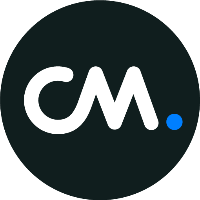Event Based Retargeting
The Event-Based Retargeting Module enhances your marketing automation capabilities by enabling personalized campaigns based on specific customer behaviors. The module provides the ability to respond to customer actions like abandoned carts, browse sessions, or post-purchase opportunities with relevant product recommendations and offers.
Note: The ENTERPRISE Subscription is required for this module.
What is Event-Based Retargeting?
Event-Based Retargeting monitors customer behaviors and automatically triggers personalized product recommendations after specific events occur. Unlike general recommendations, these are specifically tailored to re-engage customers based on their recent actions, helping recover potentially lost sales and increase customer lifetime value.
Common Use Cases:
Abandoned Cart Recovery: Re-engage customers who added items to cart but didn't complete checkout
Browse Abandonment: Target customers who viewed products but didn't take further action
Post-Purchase Cross-sell: Recommend complementary items after a successful purchase
Behavioral Email Campaigns: Send personalized product recommendations via email
Retargeting Ads: Create targeted advertising campaigns based on specific behaviors
How to set up Event Based Retargeting
Before setting up the Event-Based Retargeting Module, ensure that:
The Customer Data Platform (CDP) is initialized and configured appropriately
You have the necessary CDP credentials (Tenant ID, Event Type ID, and Access Token)
The item-item-recommender dependency is configured and operational
Setup Properties
These are fundamental system settings that must be configured during initial implementation.
Run Schedule:
Purpose: Set when retargeting campaigns are processed using a cron expression
Options: Cron expression format
Use Case: Process daily at 9 AM to send morning retargeting emails, or hourly for real-time campaigns
Behavior Trigger
Purpose: Select the type of customer behavior that will activate your retargeting campaign
Options:
Abandoned Cart: Targets customers who added items to their cart but didn't complete checkout
Abandoned Browse: Targets customers who viewed products but didn't add them to cart
After Purchase Cross-sell: Targets customers after they complete a purchase
Use Case: Choose "abandoned cart" for checkout recovery, "abandoned browse" for browsing follow-up
3. Number of Recommendations:
Purpose: Number of recommendations per customer in retargeting campaigns
Options: 1-50 (integer)
Use Case: Send 4-6 product recommendations in abandoned cart emails, or 3-4 cross-sell items post-purchase
4. Waiting Days Before Sending Personalization
Purpose: The number of days after the event to wait before sending the retargeting campaign
Options: 1-50 days
Use Case: Wait 1 day for abandoned cart emails, or 7 days for post-purchase cross-sell campaigns
To ensure trigger data is properly delivered to your CDP:
CDP Tenant ID: Your organization's unique identifier (found in CDP > Settings > API tokens)
CDP Event Type ID: The identifier for the type of event (found in CDP > Internal Sources > Raw Sources)
CDP Access Token: Authentication token for secure data transmission (found in CDP > Settings > API tokens)
Product Selection Rules
1. Trigger Item Inclusion Settings
Purpose: Define which items can trigger retargeting campaigns (e.g., only expensive products or specific categories).
Options:
Enable/Disable: Toggle trigger item inclusion on or off.
Event Trigger Item Inclusion Criteria: Use an SQL expression builder to specify which items can trigger campaigns.
Example Use Cases:
Trigger campaigns for items priced over $100:
price > 100.Trigger campaigns for specific categories:
category = 'Electronics'.
2. Trigger Item Exclusion Settings
Purpose: Exclude specific items from triggering campaigns (e.g., accessory items).
Options:
Enable/Disable: Toggle trigger item exclusion on or off.
Event Trigger Item Exclusion Criteria: Use an SQL expression builder to specify which items should not trigger campaigns.
Example Use Cases:
Exclude low-value items:
category = 'Accessories'.Exclude clearance items:
status = 'Clearance'.
3. Recommended Item Inclusion Settings
Purpose: Specify which items can be recommended in campaigns (e.g., only in-stock or profitable items).
Options:
Enable/Disable: Toggle recommended item inclusion on or off.
Recommendation Item Inclusion Criteria: Use an SQL expression builder to define which items can be recommended.
Example Use Cases:
Recommend only in-stock items:
stock > 0.Recommend high-margin products:
margin > 20%.
4. Recommended Item Exclusion Settings
Purpose: Exclude specific items from being recommended (e.g., low-margin or restricted products).
Options:
Enable/Disable: Toggle recommended item exclusion on or off.
Recommendation Item Exclusion Criteria: Use an SQL expression builder to define which items should not be recommended.
Example Use Cases:
Exclude low-stock items:
stock < 5.Exclude restricted brands:
brand = 'Restricted'.
Ranking Modifications
5. Item Numerical Attribute Boost Settings
Purpose: Boost items based on numerical attributes like price or profit margin.
Options:
Enable/Disable: Toggle numerical boosting on or off.
Boost Feature: Select a numerical feature (e.g., price, profit margin).
Boost Strength: Set the boost intensity (0-10).
Example Use Cases:
Prioritize high-margin products.
Boost items with higher customer ratings.
6. Item Categorical Attribute Boost Settings
Purpose: Boost specific sets of items based on categorical attributes.
Options:
Enable/Disable: Toggle categorical boosting on or off.
Boost Condition: Define which items to apply the boost to.
Boost Strength: Set the boost intensity (0-10).
Example Use Cases:
Boost new arrivals:
is_new = true.Prioritize premium brands:
brand = 'Premium'.
Diversity Control
7. Limit Similar Recommendations
Purpose: Ensure variety in recommendations by limiting similar products.
Options:
Enable/Disable: Toggle diversity control on or off.
Grouping Feature: Select a feature to group similar products (e.g., Color, Category, Brand).
Maximum Similar Products: Set the maximum number of products that can share the same feature value (1-15).
Example Use Cases:
Limit to 2 products from the same category in abandoned cart emails.
Fallback Configuration
8. Fallback Settings
Fallback Method:
Purpose: Define the fallback method when personalized recommendations are insufficient.
Options:
Popularity: Show popular items from the catalog.
Popularity Attribute: Show popular items based on specific attributes.
Number of Fallback Recommendations:
Purpose: Specify the number of fallback recommendations to display.
Options: 1-1000 (integer).
Example Use Cases:
If customer interaction history is limited, show 4 popular items from their browsed category.
Fallback Column Names:
Purpose: Define item attributes for fallback calculations.
Availability: Only applicable when Fallback Method = "Popularity Attribute".
Example Use Cases:
Show popular items within the same category or brand when personalized data is unavailable.
